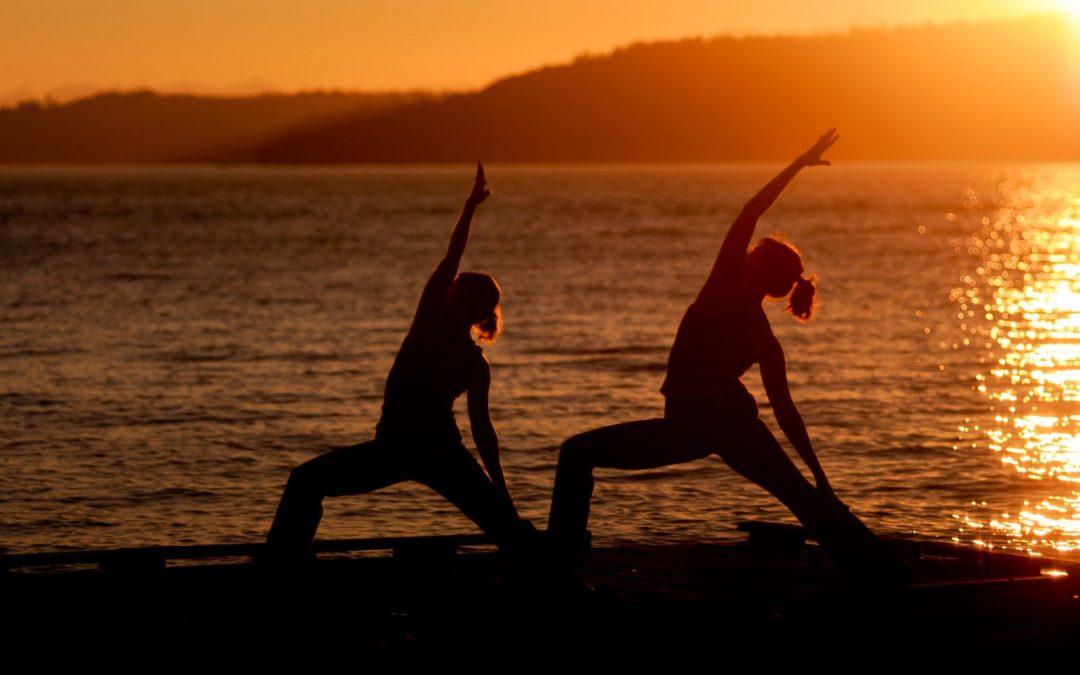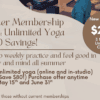The longer I teach and practice yoga, the gentler my teaching and practice become. I tell my yoga friends, “pretty soon we will just be doing Savasana for 90 minutes!” That might be an exaggeration, but for me (and for many teachers I know), there is a broader movement towards a gentler and more sustainable practice as we age. There is a softening of our practice, a slowing down, particularly if we have dealt with an injury.
As I wrote a couple of years ago, slowing down my practice is what allowed me to keep practicing yoga as I dealt with a back injury. It is what allowed me to heal, and to find freedom within a “new normal” for my body. As we age, we have to choose how to care for ourselves. I began yoga when I was a teenager, and now am in my 40’s. What my body wants and needs in my practice now is very different from when I was younger. I see many students come into the studio who are in their 40’s, 50’s, 60’s and beyond. They are looking to care for their bodies and minds in a way they haven’t in their fast-paced lives until now. A student came in recently and said to me, “it’s time to take care of myself.”
Another dedicated student came to me last week, distraught about a recent medical diagnosis. On top of being upset about the medical issue, she was concerned that she would no longer be able to practice yoga. Over the last couple of years, her yoga practice had become a refuge. It fulfilled something for her physically, mentally and emotionally, as well as the gift of feeling connected to a warm community at the yoga studio. She was visibly upset when she was telling me about this, upset about the diagnosis, and upset about the thought of giving up something that had brought her so much joy and contentment.
After some conversation, she realized that she perhaps didn’t need to throw out her whole practice, but discover it in a new way. I understood her resistance to her practice changing, to not being able to move her body in the way she was used to. I told her that there is nothing wrong with grieving that loss. And I invited her to trust that all is not lost. This physical change would challenge her to learn to relate to her body in a new way. She is a past student of Mindfulness Based Stress Reduction (MBSR), and I suggested she take some time with a body scan meditation (one of the core meditations we explore in MBSR). I felt that taking some time to observe and be with her body in a non-judgmental way could be helpful during this time.
She said that might be perfect. She reflected on how angry at her body she has been since her diagnosis. Like her body betrayed her, despite trying to do everything right and care for herself and live a healthy lifestyle.
Sometimes we do everything right and we get sick or injured anyway. We do everything right and a relationship ends. Or we lose a job, a loved one. There is no rightness, no perfect living that will keep us from experiencing loss and change.
Sometimes, when our yoga practice has to change because of our body changing, we actually end up having a deeper experience of our practice.
Jon Kabat-Zinn, the founder of MBSR, says if you can breathe, there is more right with you than wrong with you. Krishnamacharya, regarded to be the grandfather of modern day yoga, says “If you can breathe, you can do yoga.”
When approaching our yoga practice from a place of mindfulness, we can begin anywhere. This yoga is not about what our body can or cannot do. It is not about constant improvement – moving on an ever upward trajectory of getting better, stronger, more flexible, mastering harder poses. It is about meeting this body as it is today. Not as we hope it will be, or how we wish it was. Right here with this body as it is. Not some perfect body, but this body with all its humanness and imperfection.
What does that look like on our mat? Maybe it looks like slowing down our practice. Maybe it looks like going 30% into a pose rather than 100%. Or not doing deep forward bends. Or holding back in twists. Maybe it looks like backing off when we are used to pushing on.
I believe that it looks like this: Bringing awareness to our self-judgments and self-criticisms and comparisons. It looks like doing our best to practice compassion for where we are, today.
A mindful yoga practice is a practice for a lifetime. If we want to practice for our lifetime, we might be best served by bringing patience, flexibility, and openness to our experience. It’s a good thing that’s what our practice can teach us.






